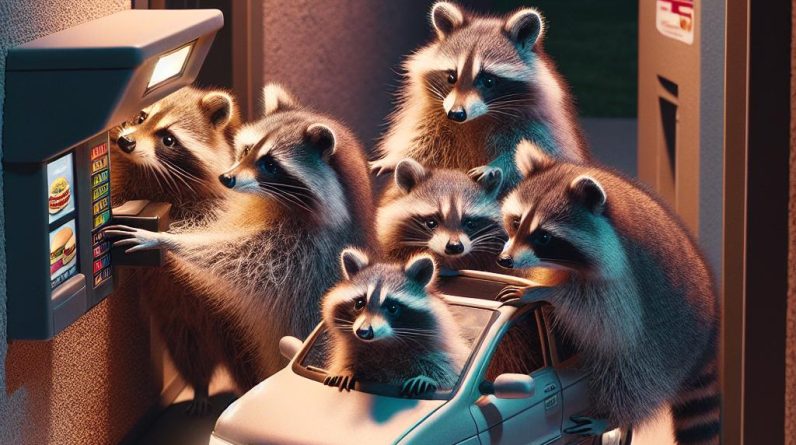Sea otters are much more than just cute faces—they’re eco-warriors helping our oceans thrive! 🦦❤️ #SeaOtterLove #EcoWarriors #NatureFacts #WildlifeConservation #UnderwaterEcosystem #AdorableAnimals #funfacts #fun #interesting #facts #didyouknow #factsdaily #randomfacts #interestingfacts #amazingfacts
The Amazing World of Sea Otters
What are Sea Otters?
Sea otters (Enhydra lutris) are marine mammals found along the coasts of the northern and eastern north Pacific Ocean. Known for their adorable appearance, these furry creatures are the largest members of the weasel family and are famous for their playful behavior and sophisticated use of tools.
Physical Characteristics
- Size: Adult sea otters typically weigh between 50 to 100 pounds and can reach lengths of up to 4 feet.
- Fur: Their dense fur is a distinguishing feature, with about 600,000 hair follicles per square inch, providing insulation in cold waters.
- Color: Sea otters exhibit‍ a range of colors from dark brown to silvery-gray,with some even having light patches due to age or health.
Habitat and Range
Sea otters predominantly inhabit coastal marine environments, particularly kelp forests and estuaries.Their range extends from northern Japan to the coasts of california, although they were once nearly wiped out due to fur trading in the 19th century.
Table: Sea Otter Habitat Locations
| Location | Population Status | Unique Features |
|---|---|---|
| California | Recovering | Known for its breeding populations along the central coast. |
| Alaska | Stable | Largest populations can be found here, thriving in rich marine ecosystems. |
| Washington State | Vulnerable | Efforts are underway to increase populations in this region. |
Diet and Feeding Habits
Sea otters are carnivorous and enjoy a diverse diet that mainly includes:
- Sea urchins
- Crabs
- Clams
- Fish
- Octopus
Using their dexterous front paws, sea otters can crack open shellfish and other hard-shelled prey. They are known to use rocks as tools,wich is a unique behavior among marine mammals.
Social Structure and Behavior
Sea otters typically live in groups called rafts, which can consist of up to 20 individuals. these rafts often include mothers and their pups. Social behaviors include grooming, playing, and cooperative hunting.
Unique Behaviors
- Tool Use: Sea otters are one of the few animal species known to use tools, employing rocks and other objects to open shells.
- Floating Groups: To keep their pups safe while hunting, mothers wrap their young in kelp, preventing them from drifting away.
Reproduction and Lifespan
sea otters generally reach sexual maturity between 2 and 5 years of age. The mating occurs throughout the year, with females giving birth to a single pup after a gestation period of about six months.
Newborns weigh approximately 3 pounds and are unable to dive, requiring constant attention from their mothers for survival.
Lifespan
In the wild, sea otters can live up to 15-20 years, though they are faced with many dangers including pollution, hunting, and habitat loss.
Threats to Sea Otters
Despite their adorable nature, sea otters face several threats:
- Oil Spills: Oil contamination can severely impact their health and the ecosystems they inhabit.
- Habitat Loss: Coastal development and pollution contribute to habitat degradation.
- Climate Change: Rising ocean temperatures can effect kelp forests, which are essential for their survival.
- Predation: While adult sea otters have few natural predators, orcas have been known to prey on them in some regions.
Conservation Efforts
Multiple organizations are working to conserve sea otters and their habitats. Here are some meaningful efforts:
- Legislation such as the Marine Mammal Protection Act.
- Rescue and rehabilitation programs for injured or orphaned otters.
- Community awareness campaigns to educate the public about the importance of sea otters in the marine ecosystem.
How You Can Help
Everyone can contribute to the conservation of sea otters through simple actions:
- Reduce plastic use and participate in clean-up activities at local beaches.
- Support wildlife conservation organizations dedicated to protecting marine life.
- Advocate for policies that protect marine environments and natural habitats.
First-Hand Experiences with Sea otters
Visiting marine parks or aquariums can provide insightful experiences with sea otters. Observing their playful antics and engaging in educational programs can inspire people to take action for conservation efforts. Many facilities offer opportunities to support sea otter rescue operations through donations or volunteer work.
Case Studies: success Stories in Sea Otter conservation
1. California Sea Otter Recovery: After nearly disappearing, California’s sea otter population is slowly recovering thanks to robust conservation efforts and protected areas.
2. Kelp Forest Restoration projects: Various initiatives are underway to restore kelp forests in California and Alaska, providing essential habitats for sea otters and their prey.
Conclusion
the journey of sea otters is one of resilience and essential ecological balance.By learning more and participating in their conservation,we can all make a difference.





